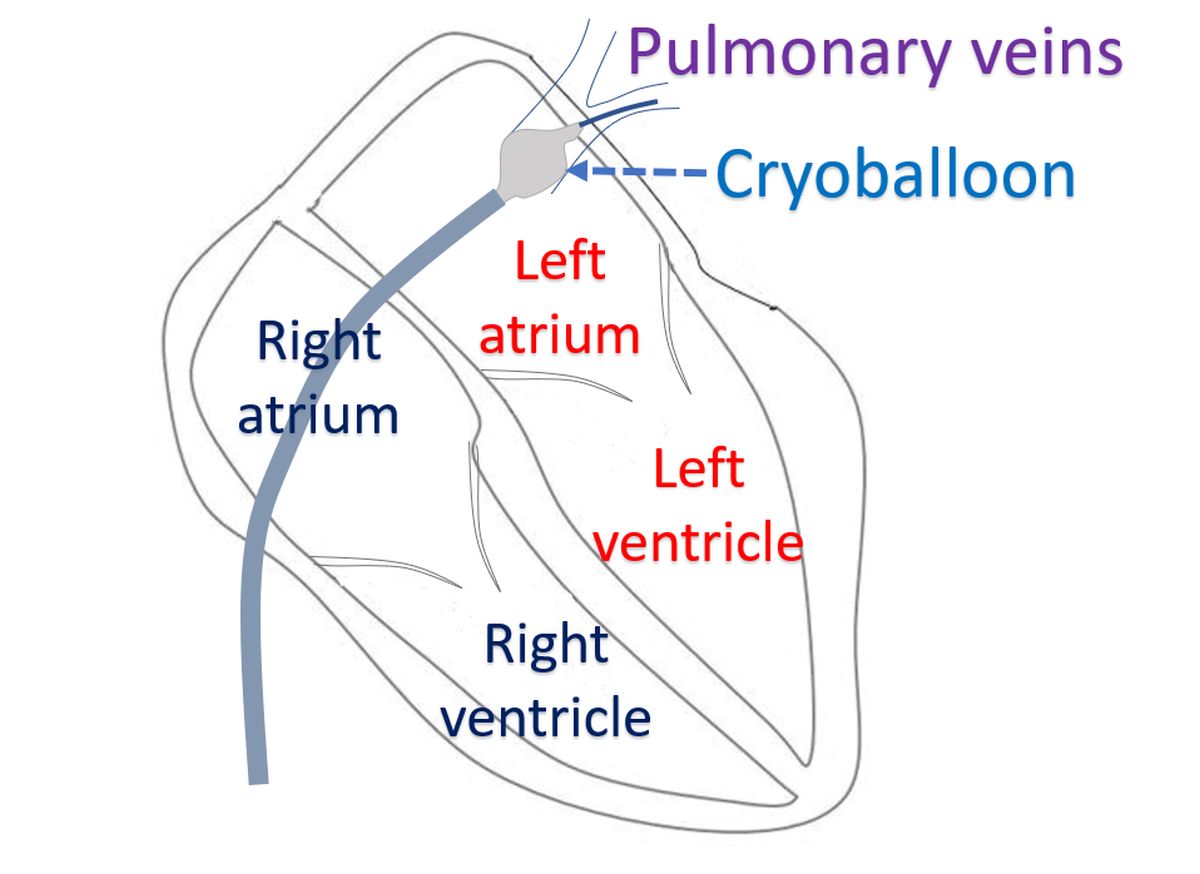What is cryoablation?
What is cryoablation?
Cryoablation is a method used to treat heart rhythm disorders by freezing the abnormal region using a cryoprobe. While radiofrequency ablation removes an abnormal focus or pathway by heating up the tissue, cryoablation does the same by cooling the tissue to sub-zero temperature. Currently the cryoprobe is much more expensive than the radiofrequency ablation system and is not as widely available. The advantage of cryoprobe is the reversibility while treating foci near to critical cardiac structure. Initial cooling to some extent blocks the conduction and helps to assess whether the treatment will be effective and whether any adjacent critical structure will be damaged. If any collateral damage is detected, all you have to do is to rewarm to undo the damage done. If no collateral damage is detected, further cooling produces a permanent treatment effect. Though the chance for collateral damage is less, the efficacy also may be a little lower than radiofrequency catheter ablation because of the slightly higher chance or recurrence. It may be noted like radiofrequency ablation, cryoablation is also used in other disciplines like cancer therapy.
In a survey sent to members of the European Heart Rhythm Association Research Network, 49 centres from 18 countries responded [1]. Annual cryoablation volume was between 300 to 500 procedures in 3 centres, 200-299 in 4 centres, 100-199 in 8 centres, 50-99 in 21 centres and less than 50 in 21 centres. That means the large majority performed less than 100 cryoablations per year. Cryoenergy for supraventricular tachycardia was routinely used by only 6.1% of centres. Cryoablation was rarely used for ventricular tachycardia, only 8% of centres used it in selected cases. At the same time it was used for the treatment of atrial fibrillation in 89.8% of the centres.
Cryoballoon ablation
In addition to focal cryoablation, cryoballoon ablation is also taking off, especially in pulmonary vein isolation for atrial fibrillation. FIRE AND ICE trial was a multicenter, randomized open label trial which compared cryoballoon ablation with radiofrequency ablation for paroxysmal atrial fibrillation [2]. In cryoballoon ablation, cryogenic energy is applied with a balloon in a single-step mode, which leads to tissue necrosis by freezing. The cryoballoon was developed to create a circular lesion around each pulmonary vein. FIRE AND ICE trial documented the noninferiority of cryoballoon ablation compared to radiofrequency ablation regarding efficacy in drug refractory paroxysmal atrial fibrillation. Overall safety was similar between the two methods.

CRYO4PERSISTENT AF Trial was a prospective multicenter single arm trial to assess single procedure outcomes of pulmonary vein cryoablation in early persistent atrial fibrillation [3]. Single procedure success at 12 months was 61% and there was significant reduction in arrhythmia related symptoms. Quality of life was also improved after cryoballoon ablation.
References
- Jian Chen, Radoslaw Lenarczyk, Serge Boveda, Roland Richard Tilz, Antonio Hernandez-Madrid, Pawel Ptaszynski, Janis Pudulis, Nikolaos Dagres, Scientific Initiative Committee, European Heart Rhythm Association. Cryoablation for Treatment of Cardiac Arrhythmias: Results of the European Heart Rhythm Association Survey. Europace. 2017 Feb 1;19(2):303-307.
- Kuck KH, Brugada J, Fürnkranz A, Metzner A, Ouyang F, Chun KR, Elvan A, Arentz T, Bestehorn K, Pocock SJ, Albenque JP, Tondo C; FIRE AND ICE Investigators. Cryoballoon or Radiofrequency Ablation for Paroxysmal Atrial Fibrillation. N Engl J Med. 2016 Jun 9;374(23):2235-45.
- Boveda S, Metzner A, Nguyen DQ, Chun KRJ, Goehl K, Noelker G, Deharo JC, Andrikopoulos G, Dahme T, Lellouche N, Defaye P. Single-Procedure Outcomes and Quality-of-Life Improvement 12 Months Post-Cryoballoon Ablation in Persistent Atrial Fibrillation: Results From the Multicenter CRYO4PERSISTENT AF Trial. JACC Clin Electrophysiol. 2018 Nov;4(11):1440-1447.